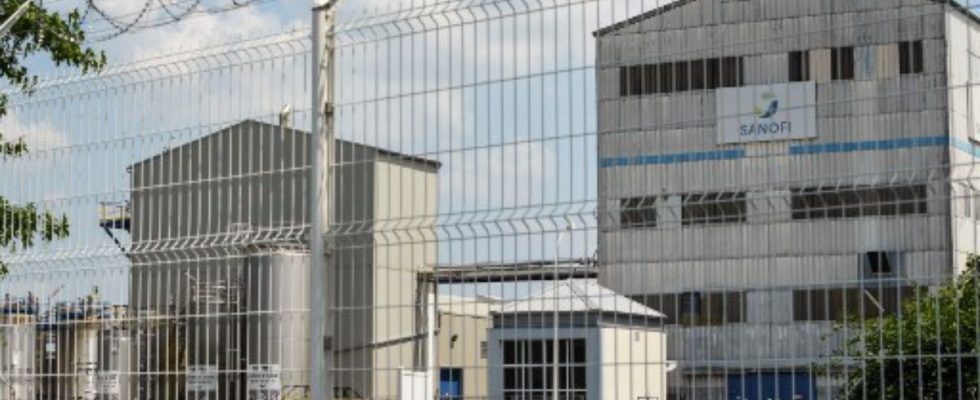It would be a scandal within a scandal. Can children be sick from Dépakine without their mother having even taken the antiepileptic drug during treatment taken during pregnancy? The mother of two children born in 2014 and 2016, who worked opposite the Sanofi factory which manufactures sodium valproate, the active ingredient in Dépakine, in Mourenx (Pyrénées-Atlantiques) when she was pregnant, fears this.
Her children present disorders similar to those of the “Dépakine children” and she filed a complaint on November 15 for involuntary injuries resulting in total incapacity for work (ITT) of more than three months, endangering the lives of others and non-reporting of adverse effects. The complainant did not take Dépakine herself but the depakinemia (measurement of Dépakine in the blood) which she carried out at the time, in August 2018, turned out to be positive.
Toxic releases into the air and water?
On July 9, 2018, Sanofi was forced to shut down its Mourenx plant after significant quantities of pollutant discharges were noted. “The road was covered in Dépakine powder,” remembers Marine Martin, president of the association helping parents of children suffering from anticonvulsant syndrome (Apesac), which filed a complaint in this matter with France Nature Environnement (FNE). The threshold for Bromopropane, recognized as carcinogenic, mutagenic and possible reprotoxic by the WHO, and which is included in the composition of sodium valproate, exceeded the authorized threshold by up to 190,000 times.
“All of the studies carried out concerning the assessment of health risk and shared with the authorities have not identified any particular risk, whether current releases or past releases,” assures 20 minutes the communications department of the pharmaceutical group Sanofi. After this 2018 alert, Sanofi highlights “real measurements near the production workshop as well as in the environment (among local residents, in groundwater, on fruits and vegetables, in the ambient air on site and off-site…)”. And the group assures that “none of the hundreds of measurements carried out has called into question the conclusions of the health risk studies. »
The problem is that the association points out that the national agency for food, environmental and occupational health safety (ANSES) has not established a minimum threshold for Dépakine (for bromopropane but not for Dépakine). “For pregnant women, there is no minimum threshold, but the higher the threshold, the greater the risk for the unborn child,” indicates Marine Martin. So for me, there is no minimum threshold for women contaminated by air or water. » The Gave is the river that flows through Mourenx and the association is wondering about possible contamination by factory discharge from this environment.
A causal link to demonstrate
“Recently, we were contacted by around ten families whose children presented with disorders similar to those exposed to Dépakine during pregnancy, when the mother took this medication,” indicates Marine Martin. We are talking about neurobehavioral disorders: these can be autism spectrum disorders, language disorders, dyspraxia or non-descending of the testicles, in boys. There is still a long way to go for these families, who are gathering medical reports attesting to the problems. “I think that it is the number of children who will present these typical symptoms which will make it possible to establish a causal link,” says the president of Apesac. These families cannot develop depakinemia because the drug remains in the blood only three months after exposure.
It is a “bundle of neuronal disorders”, which guides the differential diagnosis. If it is important “then there is too much bad luck for it to be honest and the blame is due to the medication”, points out Marine Martin. The diagnostic criteria for “Dépakine children” have been listed by scientists in a document which defines over 70 pages the national diagnosis and care protocol. “These official documents are subject to change,” she adds.
An epidemiological investigation?
Since 2018, work to bring the atomizer which reduces Dépakine into powder into compliance has been carried out and discharges are supposed to be controlled at Mourenx. However, Apesac does not want to take the pharmaceutical giant’s word for it. It requests independent samples to verify that there are no longer any problematic discharges on the site and an epidemiological investigation.
On September 28, Santé Publique France launched a participatory study on the entire Lacq basin. But the national public health agency itself recognizes that it will not allow progress on the specific issue of discharges from the Sanofi factory in Mourenx. “Pathologies such as asthma, diabetes, cancers or even childhood neurodevelopmental disorders can be reported by the people surveyed,” the agency specifies. 20 minutes. But this study does not aim to answer the specific question of the health impact linked to discharges from a particular industrial installation and will not allow the analysis of results at the scale of a municipality. »
For Apesac, data should be collected from the National Health Insurance Fund (Cnam) to see if, in an area close to the factory, there are more autism diagnoses, more speech therapy rehabilitation, non-descent of the testicles, craniosthenosis, or cardiac malformations typical of anti- convulsive than in the general population.
The association believes that Sanofi must take its responsibilities, particularly in compensating families. “Servier had to put his hand in his pocket in the Mediator affair,” slips its president. For the moment, the national medical accident compensation office (Oniam) was only supplemented, to the tune of 60 million euros, by public funds for the hundred direct victims already compensated. The association currently estimates the number of Dépakine victims at more than 8,000.

